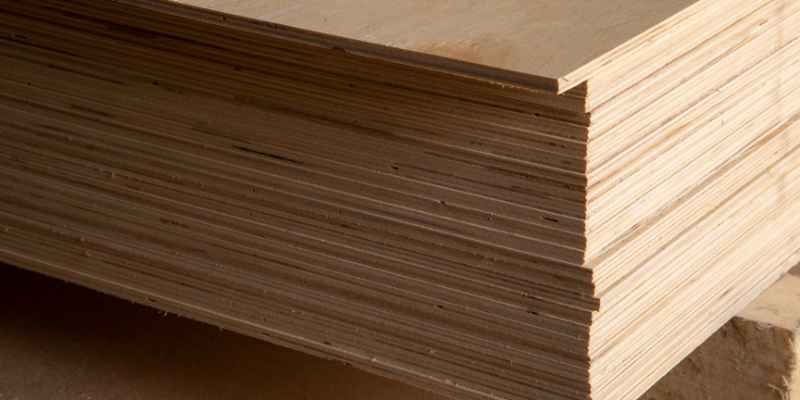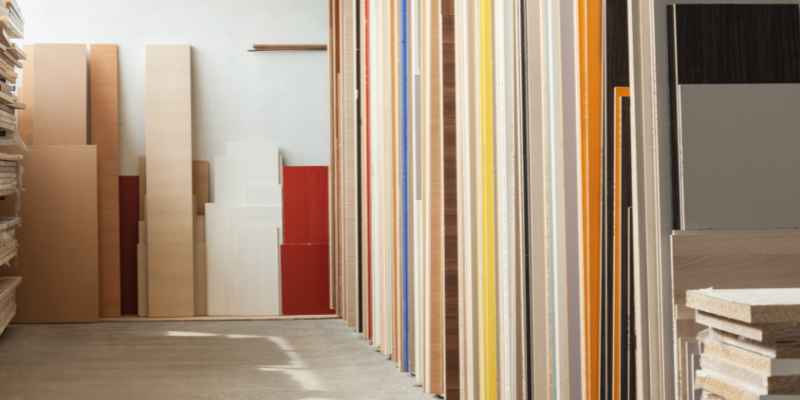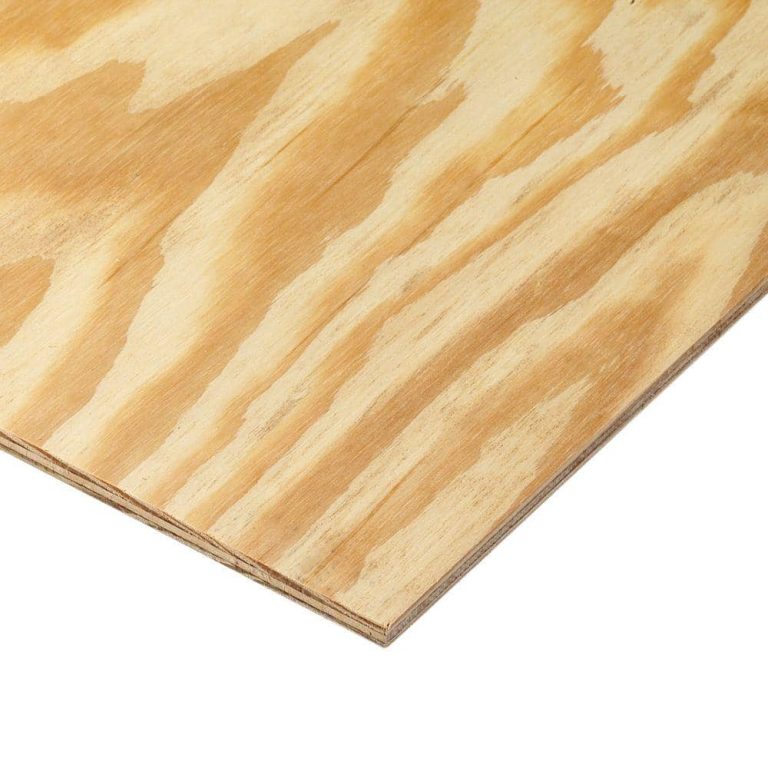How to Stiffen Plywood: Ultimate Strength Guide
To stiffen plywood, apply a coat of wood hardener or resin and let it dry. This process will increase the stiffness and durability of the plywood.
Stiffening plywood is essential for various DIY projects and woodworking applications. By following simple steps, you can enhance the structural integrity of plywood, making it suitable for a wide range of uses. Whether you are building furniture, constructing shelves, or working on a home improvement project, stiffened plywood will provide the strength and support needed for your creations.
Understanding how to stiffen plywood effectively will ensure the longevity and stability of your woodworking endeavors.
Introduction To Plywood Stiffening
Plywood is a versatile and commonly used material in construction and woodworking projects. It is made by gluing together multiple thin layers of wood veneers, with each layer positioned perpendicular to the adjacent ones. This construction method gives plywood its strength and durability. However, there may be instances when plywood needs to be further strengthened to meet specific project requirements. This is where plywood stiffening comes into play.
Plywood Properties And Common Uses
Plywood possesses several unique properties that make it a popular choice in various applications. Here are some key properties of plywood:
- Strength: Plywood is known for its exceptional strength-to-weight ratio, making it suitable for structural applications.
- Durability: The cross-grain construction of plywood enhances its resistance to warping, cracking, and splitting.
- Versatility: Plywood comes in different grades and sizes, making it adaptable for a wide range of projects.
- Cost-effective: Compared to solid wood, plywood is often more affordable, making it an economical option for many projects.
Due to these properties, plywood finds extensive use in various industries, including construction, furniture manufacturing, cabinetry, and interior design.
Reasons For Stiffening Plywood
While plywood is inherently strong, there are situations where additional stiffness is required. Here are some common reasons for stiffening plywood:
- Heavy loads: When plywood is expected to bear heavy loads, such as in flooring or shelving installations, stiffening can help distribute the weight more evenly and prevent sagging or bending.
- Structural reinforcement: In some cases, plywood needs to be reinforced to improve its structural integrity and resistance to forces like wind or earthquakes.
- Curved or shaped surfaces: Stiffening plywood is often necessary when working with curved or shaped surfaces, as it helps maintain the desired form and prevent deformation.
- Enhanced rigidity: Stiffening plywood can provide additional rigidity and stability, making it suitable for applications where minimal flexing is desired.
By stiffening plywood, you can ensure that it meets the specific requirements of your project and performs optimally under various conditions.
Materials And Tools Required
When stiffening plywood for a project, it’s essential to have the right materials and tools on hand. The process requires a combination of adhesives and support structures to ensure the plywood achieves the desired stiffness. Below is a breakdown of the materials and tools needed to stiffen plywood effectively:
List Of Essential Supplies
- Plywood Sheets: Select high-quality plywood sheets with the appropriate thickness for your project.
- Wood Glue: Choose a strong, waterproof wood glue for optimal adhesion.
- Clamps: Utilize clamps to hold the plywood layers together during the stiffening process.
- Supporting Structure: Have a supporting structure or mold ready to shape the plywood into the desired form.
- Sandpaper: Keep sandpaper on hand for smoothing the plywood edges after stiffening.
Choosing The Right Adhesives
When selecting adhesives for stiffening plywood, it’s crucial to opt for products specifically designed for woodworking. Waterproof wood glue is a top choice as it provides a strong bond and protects the plywood from moisture damage. Consider polyurethane-based adhesives for projects that require additional strength and durability.
Selecting The Appropriate Plywood

When it comes to stiffening plywood, selecting the appropriate type is crucial to achieve the desired level of stiffness. The type of plywood you choose will greatly impact the overall stiffness of the final product, making it essential to understand the different types and their characteristics.
Types Of Plywood And Their Characteristics
When selecting plywood for stiffening purposes, it’s important to consider the various types available and their specific characteristics. Here are some common types of plywood and their key attributes:
- Structural Plywood: Known for its strength and durability, suitable for applications requiring high stiffness.
- Marine Plywood: Designed for water-based applications, offering excellent stiffness and resistance to moisture.
- Hardwood Plywood: Features a strong and dense composition, providing enhanced stiffness for various projects.
- Softwood Plywood: Offers good stiffness and is commonly used in construction and DIY projects.
Factors Affecting Plywood Stiffness
Several factors can influence the stiffness of plywood, impacting its suitability for stiffening purposes. Understanding these factors is essential when selecting the right plywood for your specific needs. Some key factors affecting plywood stiffness include:
- Wood Species: Different wood species used in the manufacturing of plywood can significantly impact its stiffness.
- Thickness: Thicker plywood generally offers greater stiffness compared to thinner variants.
- Adhesive Quality: The type and quality of adhesive used in plywood construction can affect its overall stiffness.
- Grain Direction: The orientation of wood grain within the plywood can influence its stiffness and strength.
Preparation Steps
To stiffen plywood, start by applying a coat of wood hardener to both sides and the edges. Once dry, sand the surface and apply a layer of epoxy resin. Repeat this process until the desired stiffness is achieved. This method will ensure that the plywood remains strong and rigid for your project.
Before beginning the process of stiffening plywood, it is crucial to prepare the surface and cut the plywood to the desired size. These preparation steps are essential to ensure that the stiffening process is successful and the plywood maintains its shape.
Cleaning And Sanding The Surface
The first step in preparing the plywood for stiffening is cleaning the surface to remove any dirt, debris, or oil. A clean surface ensures that the glue adheres correctly and creates a tight bond. After cleaning the surface, it is vital to sand the plywood to remove any rough patches and ensure a smooth surface. Sanding the plywood also helps the glue to bond to the surface more effectively.
Measuring And Cutting To Size
The next step is to measure and cut the plywood to the desired size. It is crucial to measure the plywood accurately, ensuring that the stiffening material fits correctly. Use a straight edge and a sharp knife to make a clean cut. Avoid using a saw as it can cause the plywood to splinter and damage the surface. Once the plywood is cut to size, it is ready for the stiffening process.
In conclusion, preparation steps are essential in stiffening plywood. Cleaning and sanding the surface remove any dirt and debris and ensure a smooth surface for the glue to bond. Measuring and cutting the plywood to size ensures that the stiffening material fits correctly and provides the necessary support. By following these preparation steps, you can successfully stiffen plywood and enhance its structural integrity.
Stiffening Techniques
When it comes to stiffening plywood, there are various techniques you can use to enhance its rigidity and durability. By employing the right methods, you can ensure that your plywood is strong enough to withstand different applications.
Adding Additional Layers
One effective way to stiffen plywood is by adding extra layers of the material. By bonding multiple sheets together, you can significantly increase the strength and stiffness of the plywood, making it more robust for your project.
Using Supports And Braces
Another method to stiffen plywood is by incorporating supports and braces. These additional components provide reinforcement and structural integrity to the plywood, preventing it from bending or flexing under pressure.
Gluing Process Explained
Stiffening plywood can be achieved through a gluing process. By carefully applying adhesive to the plywood surface, you can enhance its rigidity and durability, making it suitable for various projects. The gluing process ensures a secure bond that strengthens the plywood, providing a reliable and sturdy material for your needs.
If you want to stiffen plywood, gluing is an effective method to achieve it. The process involves applying a layer of adhesive to the surface of the plywood and then pressing it with a weight or a clamp. The glue creates a strong bond between the layers of the plywood, making it stiffer and more durable.
Applying Adhesive Evenly
To start the gluing process, you need to apply the adhesive evenly over the surface of the plywood. Use a paintbrush or a roller to spread the glue, ensuring that you cover the entire surface. Be careful not to apply too much glue as it can cause the plywood to warp or bend.
Clamping And Curing Time
Once you have applied the adhesive, you need to clamp the plywood to a flat surface. Make sure that the clamps are evenly spaced and apply enough pressure to ensure that the layers of the plywood are pressed together firmly. The curing time for the glue varies depending on the type of adhesive you are using. Check the manufacturer’s instructions for the recommended curing time.
Summary:
- To stiffen plywood, the gluing process is effective.
- The process involves applying adhesive, clamping, and curing time.
- Apply the adhesive evenly with a paintbrush or a roller.
- Clamp the plywood to a flat surface and apply enough pressure.
- Check the manufacturer’s instructions for the recommended curing time.
To sum up, gluing is an effective method to stiffen plywood. Applying the adhesive evenly and clamping the plywood to a flat surface are crucial steps in the process. By following the manufacturer’s instructions for curing time, you can achieve a stiff and durable plywood surface.
Finishing Touches
To stiffen plywood, consider applying a coat of wood hardener to the surface. After the hardener dries, sand the plywood to remove any rough spots. For additional reinforcement, you can also apply a layer of fiberglass cloth with epoxy resin.
Trimming And Smoothing Edges
Use sandpaper for edges, ensure smooth finish.
Sealing And Protecting The Surface
Apply sealant to plywood surface, protect against moisture.
Maintenance And Care
When it comes to plywood, regular maintenance is crucial to ensure its longevity and durability.
Regular Inspection Tips
Inspect plywood surfaces for signs of wear and tear like cracks or warping.
- Check for water damage, especially in humid environments.
- Look for mold or mildew growth and address it promptly.
Repairing Damaged Plywood
If you notice any damage, repair it immediately to prevent further deterioration.
- Fill cracks or holes with wood filler and sand the area smooth.
- Apply a waterproof sealant to protect the plywood from moisture.
Common Mistakes To Avoid
When it comes to stiffening plywood, there are common mistakes to avoid. Instead of using overused phrases, keep your sentences brief and engaging. By following these guidelines, you can create a unique and SEO-friendly description that will help readers understand how to effectively stiffen plywood.
Plywood is a versatile building material that is commonly used in construction, furniture making, and DIY projects. While it is a strong material, it may not always be stiff enough for certain applications. Fortunately, there are ways to stiffen plywood to make it more rigid. However, there are also common mistakes that people make when attempting to stiffen plywood. In this article, we will discuss these mistakes and how to avoid them.
Inadequate Preparation
One of the most common mistakes people make when attempting to stiffen plywood is inadequate preparation. Before applying any adhesive or stiffening material, it is important to prepare the surface of the plywood properly. This includes sanding the surface to remove any rough spots or bumps, cleaning it thoroughly to remove any dust or debris, and ensuring that the surface is dry. Failure to properly prepare the surface can result in a weak bond and an ineffective stiffening job.
Incorrect Adhesive Application
Another common mistake people make when stiffening plywood is incorrect adhesive application. There are many different types of adhesives that can be used to stiffen plywood, including epoxy, polyurethane, and cyanoacrylate. However, if the adhesive is not applied properly, it can result in a weak bond that will not effectively stiffen the plywood. It is important to follow the manufacturer’s instructions when applying adhesive and to ensure that the adhesive is applied evenly and thoroughly.
Using The Wrong Stiffening Material
Finally, another common mistake people make when stiffening plywood is using the wrong stiffening material. There are many different materials that can be used to stiffen plywood, including fiberglass, carbon fiber, and even paper. However, not all materials are suitable for all applications. It is important to select the right stiffening material for the job at hand and to ensure that it is applied correctly.
In conclusion, stiffening plywood can be a great way to make it more rigid and suitable for a variety of applications. However, it is important to avoid common mistakes such as inadequate preparation, incorrect adhesive application, and using the wrong stiffening material. By following these tips, you can successfully stiffen plywood and achieve the desired results.
Advanced Techniques For Professionals
Advanced Techniques for Professionals require a deep understanding of stiffening plywood. By implementing Hybrid Stiffening Methods and Automated Machining Options, professionals can achieve superior results in their projects.
Hybrid Stiffening Methods
Combine traditional bracing with innovative materials to create a hybrid approach.
Automated Machining Options
Utilize computer-controlled systems for precision cutting and enhanced efficiency.
Case Studies: Success Stories
Stiffening plywood is essential for various construction projects, especially when it comes to building structures that require durability and strength. Plywood is a versatile material, but it can be prone to bending or warping. In this post, we’ll share with you some success stories of how people have stiffened their plywood using various techniques. These case studies will give you insights on how to stiffen plywood for your own project.
Residential Plywood Projects
Many homeowners have used plywood for various residential projects, including floors, walls, and even furniture. One success story comes from a homeowner who needed to install a new subfloor in their bathroom. They used a technique called cross-bracing, which involved cutting small pieces of plywood and attaching them in a diagonal pattern between the joists. This technique helped to stiffen the subfloor and prevent it from sagging or flexing.
Another homeowner had a problem with their kitchen cabinets, which were made from thin plywood. The cabinets were not sturdy enough to hold the weight of the dishes and pots. To fix this issue, they applied a layer of epoxy to the back of the plywood, which helped to stiffen it and prevent it from bending. They also reinforced the corners with metal brackets to further increase the strength of the cabinets.
Commercial Construction Examples
Commercial construction projects require even more durability and strength than residential projects. One success story comes from a contractor who was building a bridge using plywood panels. The panels needed to be stiffened to withstand the weight of vehicles passing over them. The contractor used a technique called sandwiching, which involved gluing two layers of plywood together with a layer of adhesive in between. This technique helped to stiffen the panels and make them more durable.
Another success story comes from a contractor who was building a stage for a concert. The stage needed to be able to support the weight of the musicians and their instruments. The contractor used a technique called kerfing, which involved making cuts into the plywood at regular intervals and then bending the plywood into a curve. This technique helped to stiffen the plywood and give it the necessary strength to support the weight of the stage.
These success stories demonstrate that there are various techniques for stiffening plywood, depending on the type of project you are working on. Whether you are building a residential project or a commercial construction, there is a technique that can help you to increase the stiffness and durability of your plywood. By following these case studies, you can learn how to stiffen plywood for your own project and ensure that it will last for years to come.
Faqs On Plywood Stiffening
Troubleshooting Common Issues
When stiffening plywood, you may encounter common issues that can affect the quality of the final product. Here are some troubleshooting tips to address these issues:
- Warped Plywood: To prevent warping, make sure to apply an even coat of adhesive on both sides of the plywood and use a balanced clamping pressure.
- Uneven Stiffness: To achieve uniform stiffness, apply the stiffening material consistently across the entire surface of the plywood and ensure proper drying time.
- Delamination: To prevent delamination, use high-quality adhesive and evenly distribute pressure during the stiffening process.
Expert Tips And Advice
For optimal plywood stiffening results, consider these expert tips and advice:
- Choose the Right Adhesive: Select an adhesive that is suitable for the specific type of plywood and stiffening material being used.
- Proper Surface Preparation: Ensure the plywood surface is clean and free of dust or debris before applying the stiffening material.
- Even Application: Apply the stiffening material evenly and consistently to prevent variations in stiffness across the plywood.
- Correct Drying Time: Allow sufficient drying time as per the manufacturer’s recommendations to ensure the stiffening material bonds effectively with the plywood.
- Quality Clamping: Use appropriate clamping techniques to evenly distribute pressure during the stiffening process for consistent results.

Frequently Asked Questions
How Can I Stiffen Plywood?
To stiffen plywood, you can apply a coat of wood glue to both sides of the plywood and then add a layer of fiberglass cloth. This will increase the stiffness and strength of the plywood, making it suitable for various applications.
What Are The Benefits Of Stiffening Plywood?
Stiffening plywood enhances its durability, making it more resistant to bending and warping. This process also increases the load-bearing capacity, making it suitable for structural applications. Additionally, stiffened plywood can withstand harsh environmental conditions, extending its lifespan.
Can I Stiffen Plywood Without Fiberglass?
Yes, you can stiffen plywood without fiberglass by using alternative materials such as carbon fiber, epoxy resin, or additional layers of plywood. Each material offers unique properties and can be chosen based on the specific requirements of the project or application.
Conclusion
To conclude, stiffening plywood is a simple and effective technique that can enhance its durability and strength. By following the steps outlined you can ensure your plywood is sturdy and reliable for various applications. Remember to choose the appropriate method for your specific project and take the necessary precautions for safety.
With these tips in mind, you’ll be well-equipped to tackle any plywood stiffening task and achieve excellent results.







